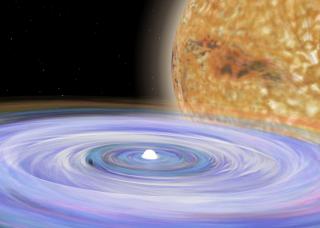Bibcode
González-Solares, E. A.; Walton, N. A.; Greimel, R.; Drew, J. E.; Irwin, M. J.; Sale, S. E.; Andrews, K.; Aungwerojwit, A.; Barlow, M. J.; van den Besselaar, E.; Corradi, R. L. M.; Gänsicke, B. T.; Groot, P. J.; Hales, A. S.; Hopewell, E. C.; Hu, Haili; Irwin, J.; Knigge, C.; Lagadec, E.; Leisy, P.; Lewis, J. R.; Mampaso, A.; Matsuura, M.; Moont, B.; Morales-Rueda, L.; Morris, R. A. H.; Naylor, T.; Parker, Q. A.; Prema, P.; Pyrzas, S.; Rixon, G. T.; Rodríguez-Gil, P.; Roelofs, G.; Sabin, L.; Skillen, I.; Suso, J.; Tata, R.; Viironen, K.; Vink, J. S.; Witham, A.; Wright, N. J.; Zijlstra, A. A.; Zurita, A.; Drake, J.; Fabregat, J.; Lennon, D. J.; Lucas, P. W.; Martín, E. L.; Phillipps, S.; Steeghs, D.; Unruh, Y. C.
Referencia bibliográfica
Monthly Notices of the Royal Astronomical Society, Volume 388, Issue 1, pp. 89-104.
Fecha de publicación:
7
2008
Número de citas
110
Número de citas referidas
100
Descripción
The INT/WFC Photometric Hα Survey of the Northern Galactic Plane
(IPHAS) is an imaging survey being carried out in Hα, r' and i'
filters, with the Wide Field Camera (WFC) on the 2.5-m Isaac Newton
Telescope (INT) to a depth of r' = 20 (10σ). The survey is aimed
at revealing the large scale organization of the Milky Way and can be
applied to identifying a range of stellar populations within it. Mapping
emission line objects enables a particular focus on objects in the young
and old stages of stellar evolution ranging from early T-Tauri stars to
late planetary nebulae. In this paper we present the IPHAS Initial Data
Release, primarily a photometric catalogue of about 200 million unique
objects, coupled with associated image data covering about 1600
deg2 in three passbands. We note how access to the primary
data products has been implemented through use of standard virtual
observatory publishing interfaces. Simple traditional web access is
provided to the main IPHAS photometric catalogue, in addition to a
number of common catalogues (such as 2MASS) which are of immediate
relevance. Access through the AstroGrid VO Desktop opens up the full
range of analysis options, and allows full integration with the wider
range of data and services available through the Virtual Observatory.
The IDR represents the largest data set published primarily through VO
interfaces to date, and so stands as an exemplar of the future of survey
data mining. Examples of data access are given, including a
cross-matching of IPHAS photometry with sources in the UKIDSS Galactic
Plane Survey that validates the existing calibration of the best data.
Proyectos relacionados

Nebulosas Bipolares
Nuestro proyecto persigue tres objetivos principales: 1) Determinar las condiciones físico-químicas de las nebulosas planetarias con geometría bipolar y de las nebulosas alrededor de estrellas simbióticas. El fin es entender el origen de la bipolaridad y poner a prueba los modelos teóricos que intentan explicar la morfología y la cinemática nebular
Antonio
Mampaso Recio

Estrellas Binarias
El estudio de las estrellas binarias es una parte esencial de la astrofísica estelar. Una gran parte de las estrellas de nuestra Galaxia y de otras galaxias se ha formado en sistemas binarios o múltiples, por lo que entender la estructura y evolución de estos sistemas es importante desde el punto de vista estelar y galáctico. Un aspecto en el que
Pablo
Rodríguez Gil